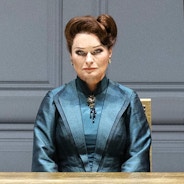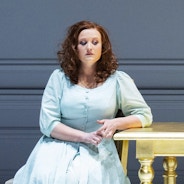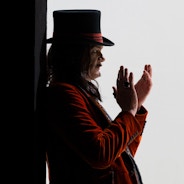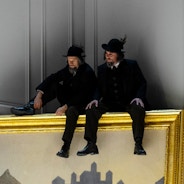
Wagner’s complete Ring Cycle
Experience the epic four-part saga just as the composer intended: live in its entirety!
A once-in-a-lifetime event at the Zurich Opera House, lauded as "dramatic music-making at its finest" (Bachtrack)
Discover Wagner's grand operatic universe and epic four-part saga...
The characters
Meet the heroes, gods, and villains of Wagner’s epic Ring cycle
The Gods

Wotan
King of the gods, known also as Der Wanderer

Fricka
Wotan’s wife, Goddess of marriage

Freia
Fricka’s sister, Goddess of youth and beauty

Loge
God of fire

Donner and Froh
God of thunder, and God of spring and sunshine
The Demigods

Brünnhilde
Wotan’s favorite daughter, leader of the Valkyries

The Valkyries
Wotan’s immortal daughters, amazons who aid heroes on their quests

The Rhinemaidens
Mermaid-like creatures who dwell in the Rhine River and guard the Rhine gold

The Norns
Erda’s daughters, they see the past, the present, and the future, weaving the Rope of Destiny
The Mortals

Siegmund
Wotan’s son with a mortal woman, and twin brother of Sieglinde

Sieglinde
Wotan's daughter with a mortal woman, and twin sister of Siegmund

Hunding
Sieglinde’s husband, the leader of an enemy clan

Siegfried
Siegmund and Sieglinde’s son, “the one that does not know fear”

Gunther
King of the Gibichungs

Gutrune
Gunther’s sister

Hagen
Gunther and Gutrune’s half-brother and advisor (also: Alberich’s son!)
Other Creatures

Alberich
Nibelung dwarf who steals the Rhine gold

Mime
Nibelung dwarf, Alberich brother and Siegfried’s foster father

Fasolt and Fafner
Giants hired by Wotan to build the God’s fortress Valhalla (Fafner is also a dragon!)

The Woodbird
Sings to Siegfried about Brünnhilde sleeping on the top of a mountain
An egomaniac? A genius? Just an uncommonly ambitious artist? As well as writing the full text of each libretto for the four operas in his Ring cycle, Wagner outdid himself as a composer when crafting its sublime music. Here’s how:

In order to describe scenes and characters with as much precision as possible, Wagner sometimes added instruments not typically found in a symphonic formation. Even before Tchaikovsky scored part of his 1812 Overture for actual cannons, Wagner called for 18 real anvils in Das Rheingold. (You can hear them in the haunting transition from Scene II to Scene III during the descent into the Nibelheim, a sort of underworld inhabited by dwarfs enslaved as blacksmiths.) \n\nBut that’s not all! For Wagner, in order to depict the fortress of the gods known as Valhalla, none of the instruments of his time seemed to fit the bill exactly — so he went to Adolphe Sax, the creator of the saxophone, to commission a tuba-like horn/trombone hybrid known today as the Wagner tuba! The instrument was later used by other composers like Bruckner, but it made its first memorable appearance in the heavenly notes at the beginning of Das Rheingold’s Scene II.